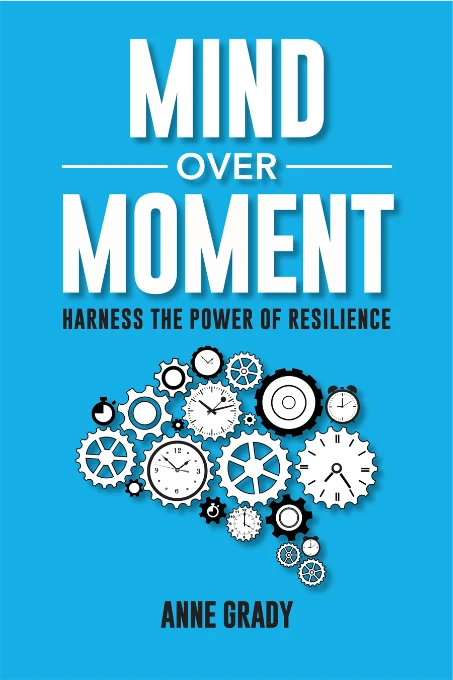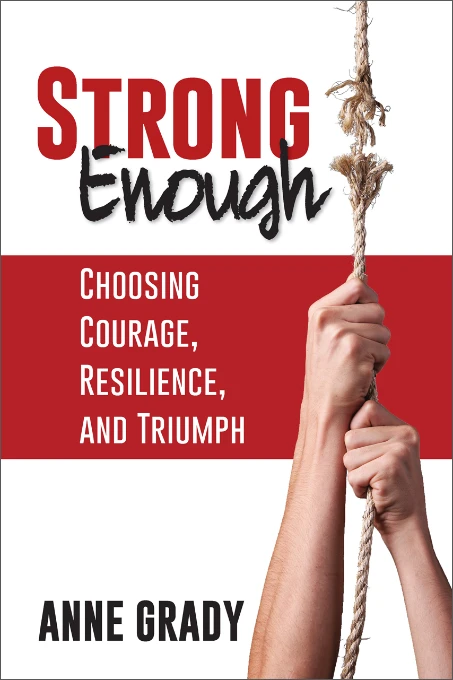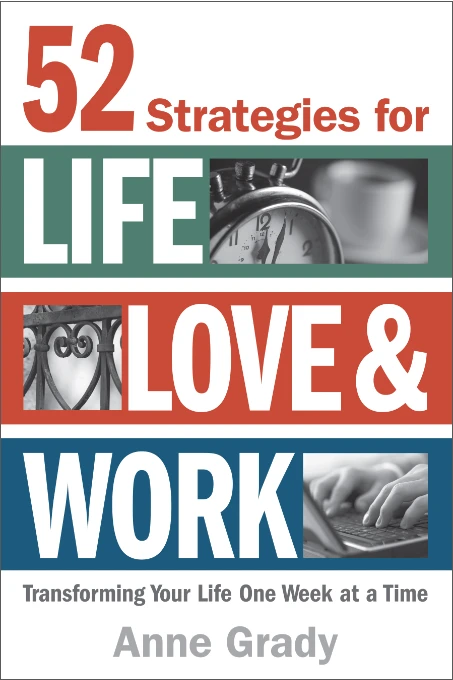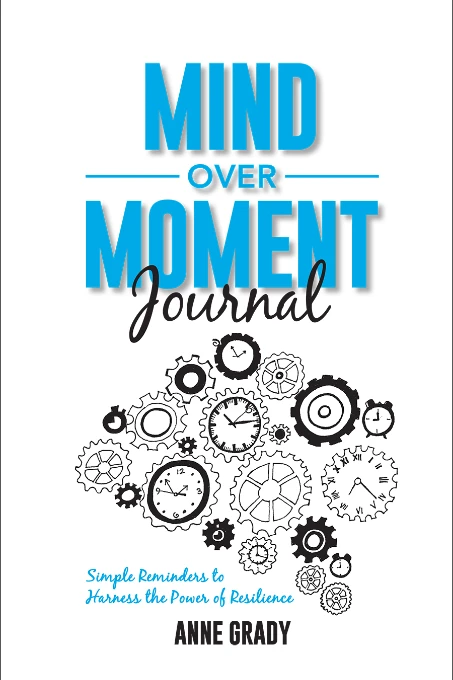Are You Stuck?
Are You Stuck?
Are You Stuck?
Brushing your teeth. Smoking. Exercise. Stress. Bathing. Emotional eating. Gratitude. Negativity.
What do all of these things have in common? Good or bad, they are all habits. In fact, almost everything we do is a habit. While many of us spend lots of time and energy trying to break bad habits, you can’t break a habit unless you have another habit to replace it.
Last week I was speaking at a conference in Oklahoma. The title of the presentation was “Being Stuck is a Habit: The secrets to getting unstuck”. Even being in a rut is a habit. So how do you get unstuck or create new habits? Here are 7 strategies to get you started:
1. Have realistic expectations. Change can be extremely difficult and can take time. Make sure you aren’t setting yourself up for failure by trying to do too much at once. Remember the slight edge concept. Small changes made consistently over time bring the greatest results.
2. Identify your pain point. Pick one area of your life that is currently causing you frustration. What about it is frustrating you? Remember, it’s much easier to stay comfortable with old problems than new solutions. Whatever area you want to change must be creating enough discomfort to make you do something differently.
3. Define success and write it down. How will you know the changes you have made have been successful? Where do you want to end up? Be specific about this. The more clearly you can define success, the better chance you have of accomplishing it. Now, write it down. Regardless of how clearly you think, writing your thoughts down helps you crystallize them. Make a very vivid picture or story about what the new results will look like. This is a powerful exercise and can determine the success of your outcome.
4. Work backwards. Whatever result you are currently getting is stemming from your actions and behaviors. What behaviors are leading you to your pain point or poor result? These behaviors are also habitual, so it might take some time to really identify them. When you experience your pain point, ask yourself, “How did I act or behave that could have caused or contributed to this result?” Then, continue to work backwards to identify the thoughts that are driving your behavior.
5. Create a replacement thought. Remember, you can’t break a habit until you have a habit to replace it. Most people try to go from a negative to a positive thought, but for most of us that’s too
much of a stretch. Try going from a negative thought to a neutral thought. Dr. David Burns does a great job of explaining this in his book Feeling Good.
6. Make visual reminders. In my car, I have a rabbit’s foot that I’ve had since I was a little girl to remind me I’m lucky. In my office, I have a little Buddha on my desk to remind myself to feel peace. And on my refrigerator, I have fortune cookie papers that have a meaningful message. Visual reminders are extremely helpful.
7. Talk to yourself instead of listen to yourself. Most of us have those little annoying self-defeating messages swirling around our head. Rather than listening to them, replace them
with deliberate messages that are positive and reaffirming.
While many of us spend lots of time and energy trying to break bad habits, you can’t break a habit unless you have another habit to replace it.
Let’s apply a real example. In last week’s post, I discussed stress addiction, so let’s use the feeling of stress and overwhelm as an example. Let’s say the poor result is struggling to meet deadlines and get it all done. What behaviors are contributing to the result? Is it procrastination? Poor organization? Lack of clearly defined goals or expectations? Where do those behaviors come from? It probably stems from thinking, “I can’t get this all done!”, or “I’m so overwhelmed” or maybe even, “why am I working harder than everyone else?” Now it’s time for replacement statements like, “I plan and prioritize my day and do one thing at a time. All I can do is all I can do” or “I clarify expectations from my boss to make sure I’m focused on high payoff activities and tasks”.
Until something becomes so engrained and habitual that you do it without even thinking about it, we stay stuck in our old patterns. What can you do this week to get unstuck?
Subscribe to Anne's Resilience Reset Email!
Anne breaks down the daily habits and skills needed to grow and cultivate RESILIENCE.
You know that task you have to do that you keep putting off? Maybe it’s a project at work, or cleaning the garage, or even having a difficult conversation.
If you are a chronic procrastinator, here are a few small steps you can take:
1️⃣ Eat Your Frog: Do the least desirable task first.
2️⃣ Set a Timer: You can do anything for 10 minutes.
3️⃣ Break the Task Down into Smaller Steps: Celebrate small wins.
4️⃣ Eliminate Distractions: Leave your phone behind.
5️⃣ Do Nothing: Your brain needs downtime (Netflix doesn’t count).
Give yourself permission to be human, and don’t forget to celebrate your accomplishments along the way.
Feeling judgmental or critical? It’s usually a sign you’re emotionally dysregulated.
The next time you feel judgmental, it’s a signal—a chance to pause and check in with yourself before you react.
Next time you feel critical, ask yourself:
✔ What am I feeling right now?
✔ What might I be avoiding?
✔ What do I actually need at this moment?
For more tips, tools, and strategies, sign up for a weekly Resilience Reset! ➡️ https://www.annegradygroup.com/strong/
It isn’t burnout. It’s buildup.
It’s the buildup of:
- Thoughts you haven’t had time to process
- Boundaries you haven’t set
- Emotions you’ve told yourself to just “power through”
That mental load doesn’t go away on its own—especially if you’re someone who keeps showing up for everyone else first.
If your mind is noisy, scattered, or tired, you don’t need another productivity hack. You need a reset. One that gets to the root of your stress—not just the symptoms.
That’s exactly why I created the Resilience Reset Deep Dive. It’s a science-backed, self-paced system to help you:
🧠 Rewire how you respond to stress
📉 Reduce overwhelm
💪 Rebuild daily resilience from the inside out
If your nervous system has been quietly waving a white flag, this is your sign to finally pay attention.
Spring clean your mind. Reclaim your calm. Join the Resilience Reset Deep Dive today ➡️ https://www.annegradygroup.com/deepdive/
Discount Code Just For You: THRIVE25 for $99
People often tell me that they feel guilty about being joyful, laughing, and looking for the good stuff when there is so much suffering in the world.
Leaning into joy doesn’t mean you deny the struggle in the world. It gives you the strength to show up as the best version of yourself so that you can give to others. 🙌

Anne Grady is a Speaker, Author, and #TruthBomb Dropper.
Anne shares practical strategies that can be applied both personally and professionally to improve relationships, navigate change, and triumph over adversity. And she’ll make you laugh while she does it. Anne is a two time TEDx speaker, and her work has been featured in numerous media outlets, including Harvard Business Review, Entrepreneur, Forbes, Fast Company and Inc. magazines, CNN, ESPN, and FOX Business. She is the best selling author of 3 books. Her newest, Mind Over Moment: Harness the Power of Resilience, is available on Amazon now.







Love the idea of “talking to yourself instead of listening to yourself” – I think reframing the internal conversation we have with ourselves is a huge part of moving forward, whether it’s with habits or happiness in general. Great post!
Thanks, Jenny! We tell ourselves all sorts of things, and for many of us, it’s all too often negative. It’s important to filter the thoughts to make sure we’re feeding our brains healthy ones!
Wow! Fantastic post – got me motivated to get through a pile of work today, after a weekend slump. And the photo of the dog in tree is toooo cute :). Thanks!
Hi Kate,
I was thinking about you yesterday! I still want to try out your goal planning software. I’ve been super busy but will be in touch 🙂 Glad you liked the post! 🙂
Anne,
I appreciated your presentation in OK. I decided to get unstuck, and one of the things that I did was tell myself I don’t have to wait until a “better time.” When I had my “frogs” that needed to be eaten, I would tell myself, “Oh, I’m going to wait until a better time so I can really focus on it.” What I found is that the “better time” never came. And so, as I procrastinated, the pile grew ever larger, and snowballed into something scary. What I found, is that five to ten minutes can make a difference in that pile of stuff.
Hi Rhonda,
Thanks so much for your comment! Good for you! Keep me posted on how it’s going!
Great post!
Thanks friend!